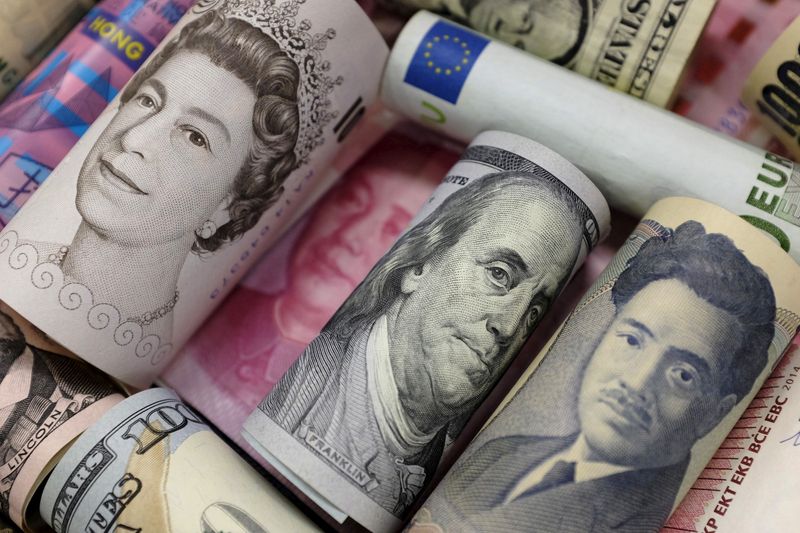By Karen Brettell
NEW YORK (Reuters) – The greenback edged lower against the Japanese yen on Tuesday with Federal Reserve chairman Jerome Powell due to speak on Wednesday, while the Aussie dollar jumped as sentiment improved on hopes that China would reopen from COVID shutdowns.
Powell’s comments will be evaluated for any new signs of hawkishness, with key jobs data for November due on Friday.
The dollar index has fallen to 106.82 from a 20-year high of 114.78 on Sept. 28 as investors look toward the U.S. central bank reaching a peak rate early next year with inflation pressures expected to subside.
“We had a sizable reversal in the dollar since the October CPI report, so that’s probably a symptom of Fed tightening fading as a force of dollar support as markets increasingly look for peak Fed policy early next year,” said Vassili Serebriakov, FX strategist at UBS in New York.
The U.S. central bank is expected to hike rates by an additional 50 basis points when it meets on Dec. 13-14, though the odds of a 75-basis-point increase have risen over the past several weeks and now stand at a 37% probability.
Traders are pricing for the Fed funds rate to peak at 5.01% in June, before falling back to 4.64% by December 2023.
The euro fell 0.15% against the U.S. currency to $1.0324. The greenback dipped 0.15% to 138.69 Japanese yen.
Moves in dollar/yen are highly correlated to U.S. interest rate policy and the Japanese currency has benefited as investors pare back expectations for further aggressive U.S. rate hikes.
Data on Tuesday showed that U.S. consumer confidence slipped to a four-month low in November, with households less keen to spend on big-ticket items over the next six months amid high inflation and rising borrowing costs.
A separate report on Tuesday showed the S&P CoreLogic Case-Shiller national home price index rose 10.6% on a year-on-year basis in September, slowing from August’s increase of 12.9%.
The Aussie jumped after health officials said that China will speed up COVID-19 vaccinations for elderly people, aiming to overcome a key stumbling block in efforts to ease unpopular “zero-COVID” curbs.
Risk appetite had worsened on Monday after protesters and police clashed over the stringent COVID restrictions.
Chinese authorities have begun inquiries into some of the people who gathered at weekend protests as police remained out in numbers on the city’s streets.
The risk-sensitive Aussie dollar, which is strongly tied to Chinese growth, gained 0.46% to $0.6684.
The offshore yuan also rose against the dollar to 7.1445.
Euro zone inflation data due on Wednesday is also in focus after figures showed inflation in Spain and Germany came in below expectations.
European Central Bank President Christine Lagarde said on Monday euro zone inflation had not peaked and it risked turning out even higher than currently expected, hinting at a series of interest rate hikes ahead.



